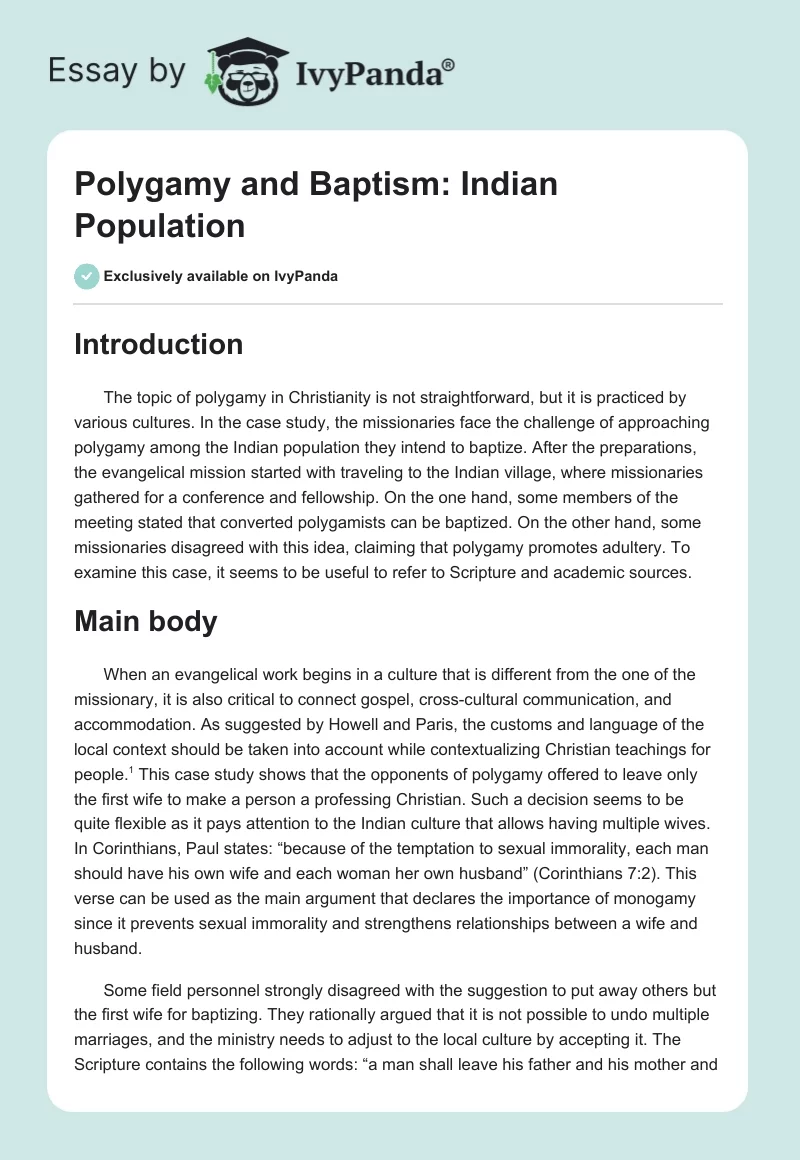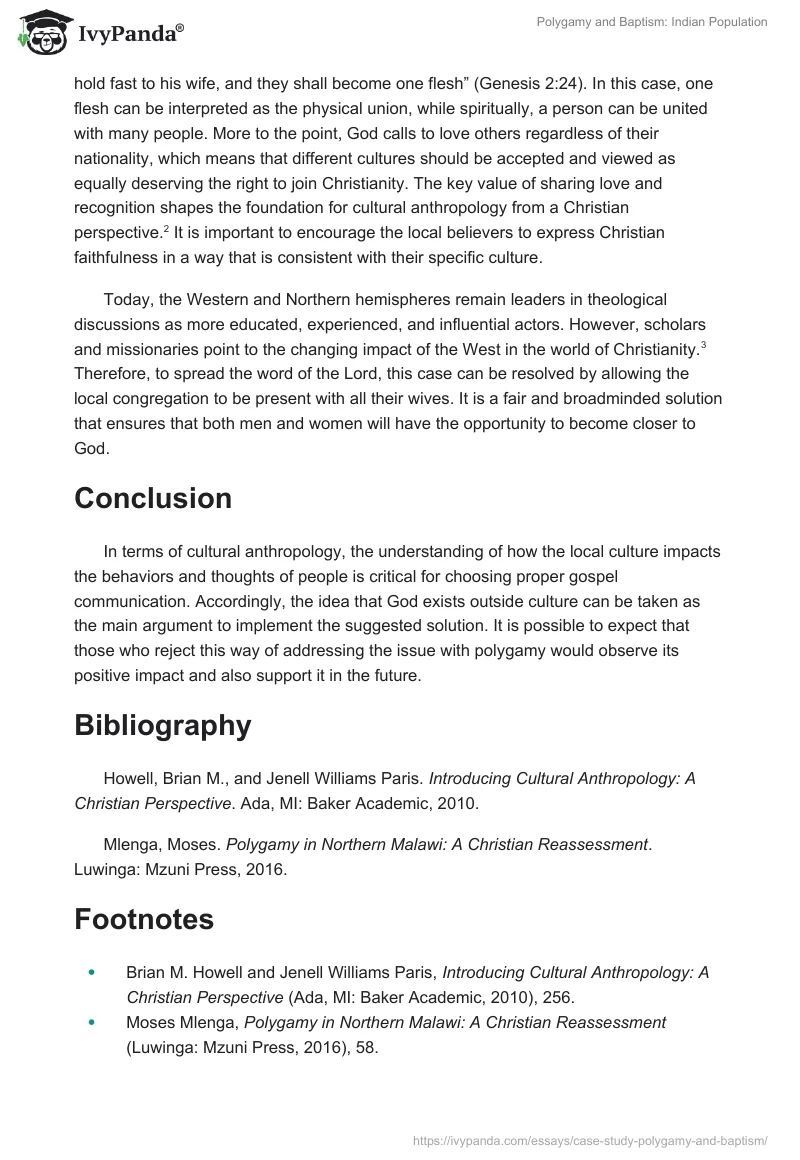Introduction
The topic of polygamy in Christianity is not straightforward, but it is practiced by various cultures. In the case study, the missionaries face the challenge of approaching polygamy among the Indian population they intend to baptize. After the preparations, the evangelical mission started with traveling to the Indian village, where missionaries gathered for a conference and fellowship. On the one hand, some members of the meeting stated that converted polygamists can be baptized. On the other hand, some missionaries disagreed with this idea, claiming that polygamy promotes adultery. To examine this case, it seems to be useful to refer to Scripture and academic sources.
Main body
When an evangelical work begins in a culture that is different from the one of the missionary, it is also critical to connect gospel, cross-cultural communication, and accommodation. As suggested by Howell and Paris, the customs and language of the local context should be taken into account while contextualizing Christian teachings for people. This case study shows that the opponents of polygamy offered to leave only the first wife to make a person a professing Christian. Such a decision seems to be quite flexible as it pays attention to the Indian culture that allows having multiple wives. In Corinthians, Paul states: “because of the temptation to sexual immorality, each man should have his own wife and each woman her own husband” (Corinthians 7:2). This verse can be used as the main argument that declares the importance of monogamy since it prevents sexual immorality and strengthens relationships between a wife and husband.
Some field personnel strongly disagreed with the suggestion to put away others but the first wife for baptizing. They rationally argued that it is not possible to undo multiple marriages, and the ministry needs to adjust to the local culture by accepting it. The Scripture contains the following words: “a man shall leave his father and his mother and hold fast to his wife, and they shall become one flesh” (Genesis 2:24). In this case, one flesh can be interpreted as the physical union, while spiritually, a person can be united with many people. More to the point, God calls to love others regardless of their nationality, which means that different cultures should be accepted and viewed as equally deserving the right to join Christianity. The key value of sharing love and recognition shapes the foundation for cultural anthropology from a Christian perspective. It is important to encourage the local believers to express Christian faithfulness in a way that is consistent with their specific culture.
Today, the Western and Northern hemispheres remain leaders in theological discussions as more educated, experienced, and influential actors. However, scholars and missionaries point to the changing impact of the West in the world of Christianity. Therefore, to spread the word of the Lord, this case can be resolved by allowing the local congregation to be present with all their wives. It is a fair and broadminded solution that ensures that both men and women will have the opportunity to become closer to God.
Conclusion
In terms of cultural anthropology, the understanding of how the local culture impacts the behaviors and thoughts of people is critical for choosing proper gospel communication. Accordingly, the idea that God exists outside culture can be taken as the main argument to implement the suggested solution. It is possible to expect that those who reject this way of addressing the issue with polygamy would observe its positive impact and also support it in the future.
Bibliography
Howell, Brian M., and Jenell Williams Paris. Introducing Cultural Anthropology: A Christian Perspective. Ada, MI: Baker Academic, 2010.
Mlenga, Moses. Polygamy in Northern Malawi: A Christian Reassessment. Luwinga: Mzuni Press, 2016.


